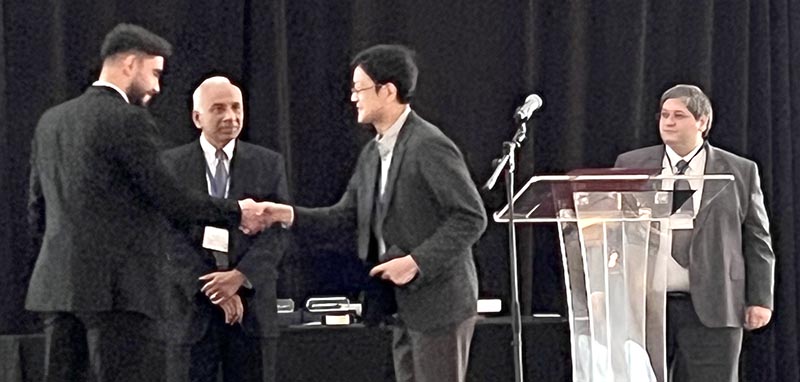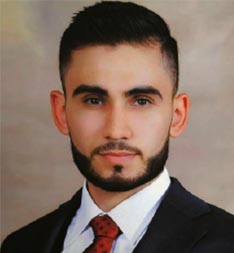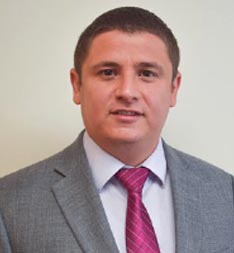June 15, 2022

Cracks can cause serious problems on roads and bridges, as they compromise the strength and soundness of a structure. A Mizzou Engineering team has devised a way to better predict not only where a crack will occur but also the path it could take as it progresses.
The work earned Rogelio Muñeton-Lopez, a master’s student in civil engineering, runner-up status at the Engineering Mechanics Institute conference earlier this month. He was one of four finalists in the student paper competition.

“The other three finalists were all Ph.D. students from Johns Hopkins University,” said Muñeton-Lopez’s advisor, Assistant Professor Oliver Giraldo-Londoño. “It was quite impressive.”
Most current methods used to predict cracking struggle to capture complicated crack paths, Muñeton-Lopez said. His team introduced a computational model to capture arbitrary crack propagations, looking at every possible direction a crack could take or branch off.
“This model is intended to reproduce different responses of materials when they fracture,” he said. “We can model failure of materials and arbitrary cracks like the ones you see in the real world.”
In other words, Muñeton-Lopez and Giraldo-Londoño can show through numerical simulation how cracks form, behave and ultimately cause a structure to fail before materials are ever used to build it.
In the future, the team plans to collaborate with Bill Buttlar, Glen Barton Chair in Flexible Pavement Technology, to apply their simulation model to new types of asphalt. Buttlar last year unveiled a pavement that incorporates recycled plastic wastes into traditional asphalt mixtures. The plastic-based pavement is currently being tested along a stretch of Stadium Boulevard in Columbia, Missouri.
This model would allow Buttlar to further experiment with pavement materials on a large-scale basis.
“In the lab, you can play with different materials to see how samples crack, but it is difficult to test different materials on full-scale roads because it’s cost prohibitive,” said Giraldo-Londoño, who is also James W. and Joan M. O’Neill Faculty Scholar in Engineering. “A well-calibrated model can allow you to run full-scale tests in virtual environments so you can see the best composition of material to make it more fracture resistant.”

In addition to pavements, the model could also be used to predict cracking in glass, rigid plastics, ceramics and other engineering materials.
The paper, “A Phase-Field Formulation for Cohesive Fracture Based on the Park-Paulino-Roesler Cohesive Fracture Model,” was Muñeton-Lopez’s first time presenting as a master’s student. He said the experience boosted his confidence and gave him presentation skills he can use in the future.
Muñeton-Lopez earned his bachelor’s degree from the National University of Colombia, Giraldo-Londoño’s alma mater, and came to Mizzou to join his research team.
“I would recommend Mizzou because my experience has been amazing,” Muneton-Lopez said. “I’ve learned a lot.”
Be part of an engineering program that gives you real-world opportunities. Study civil and environmental engineering at Mizzou!